Click Here To Join Our Telegram Channel for FREE daily tutorials!
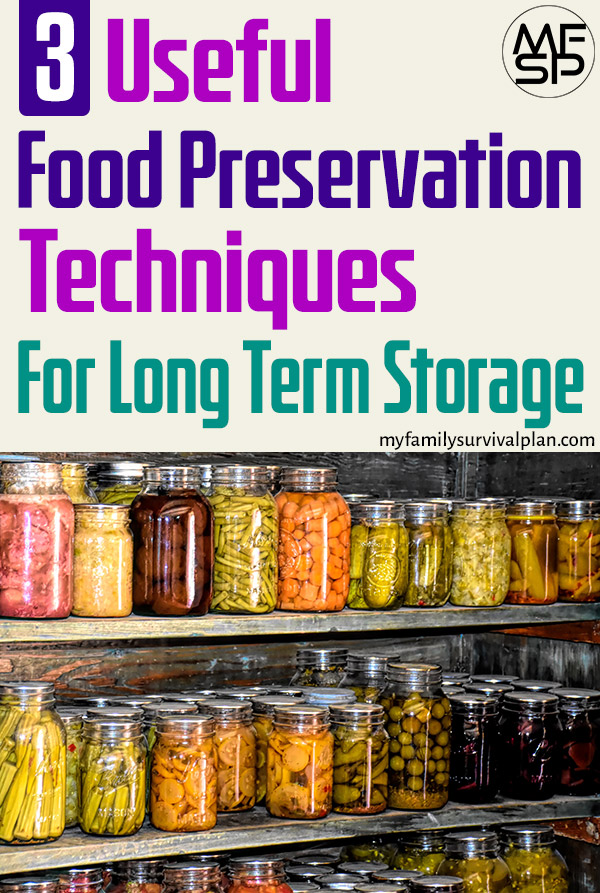
3 Useful Food Preservation Techniques For Long Term Storage. Photos – Pixabay (PD)
When it comes to storing food for a longer period of time, you must be aware of the best preservation methods, which will ensure you do not die of hunger and with a pantry full of spoiled food.
Overview
Let’s face it: none of us disposes of the money needed to buy large amounts of already preserved food. That is why we all need to obtain not only edible but delicious food as well, by preserving fresh aliments.
From my point of view, if you have a basement or a closet in your house, you need to transform it into a storage filled with preserved foods and beverages. There are many scenarios in which this area of your house will become your shelter during a crisis, and what better way to survive it than to enjoy morale-boosting food.
Recent scientific studies have revealed that certain methods of preservation can maintain some foods and ingredients safe to eat even after 25 years of storage. Food usually spoils due to bacterial infections that alter its chemical composition. The techniques that I am about to share with you will guarantee that this process will not ruin your stored goods.
1. Canning
 This procedure is also called “pasteurizing” and it works by heating the food at a specified temperature, for a certain amount of time. The resulted product is then vacuum-sealed in glass jars and stored. The canning method can be used on a variety of foods, which include:
This procedure is also called “pasteurizing” and it works by heating the food at a specified temperature, for a certain amount of time. The resulted product is then vacuum-sealed in glass jars and stored. The canning method can be used on a variety of foods, which include:
• Fruits
• Vegetables
• Seafood
• Prepared dishes
The products, which are preserved this way, can last for a period between five and eight years. However, with a little trick you can double that time and therefore, reduce your costs considerably. Here’s how to do it:
• Use your regular jam recipe, vegetable stew or desired seafood. Cook according to instructions.
• Once prepared, pour these mixtures into sterilized glass jars and use tight lids to cover them.
• Place the jars into a large pot and put old newspapers in between. This will reduce the risk of glass breaking during boiling.
• Pour enough tap water to cover three-quarters of the jars’ height;
• Place the pot over medium heat and after the water starts boiling, let it simmer for ten minutes;
• Remove the pot from the heat and the jars from the pot;
• Let the jars cool down before storing them in a dark and moisture-free room.
With this method, you will be able to preserve food for periods longer than 10 years. Just imagine a crisis that long and still you would be able to enjoy canned foods rich in vitamins and vital nutrients.
2. Drying
This is one of the oldest methods used by humankind to preserve food over long periods of time. It implies taking all the moisture out of the food, and therefore, eliminating any micro bacterial process that might take place. This technique works great with fruit, vegetables, grains, meat, and nuts. You can do this by using a conventional oven or a modern electrical dehydrator.
However, to store food in a smart way also asks for economic measures that will help you save money. For a well-stocked pantry, you will need a considerable amount of food. Therefore, you will be using your oven or your electric dehydrator extensively, and this will double or even triple your gas / electrical bills. Trust me, it’s not worth it!
Here is one simple and cheap technique that will do wonders for you, especially if you live in an area where the climate is at least moderately warm: sun drying.
You can create your own sun-dried tomatoes or fruits in less than one week. You must consider three factors:
• Natural temperature
• Humidity
• Circulation of the air
Simply put, the higher the temperature, the lower the humidity and the stronger the wind will be, the faster your food will dehydrate in natural conditions. You will need the following equipment:
• Two concrete blocks
• Two stainless steel or Teflon-coated racks
 The dimensions of the racks can be chosen depending on the amount of space that you have and the quantity of food that you wish to dry. It is crucial that they are made from the indicated materials, as other metals could have a negative chemical impact on your food.
The dimensions of the racks can be chosen depending on the amount of space that you have and the quantity of food that you wish to dry. It is crucial that they are made from the indicated materials, as other metals could have a negative chemical impact on your food.
• Choose a convenient place where to set up your drying system, such as the roof of your house or your backyard.
• Place a rack evenly balanced on the concrete blocks and start dispersing the chosen ingredient (fruits, vegetables, meat) on it.
• Cover with the second rack to keep birds and insects away, especially for the first few days of the drying process.
*Note: If you cannot afford a second rack, use thin gauze to cover the goods.
• To avoid temperature oscillations, take the food inside during the night.
Fruits and vegetables take between 3 and 5 days to become dehydrated. Meat will take between 5-7 days to dry out. Keep in mind that when drying meat, you must first soak the pieces for five minutes into brine composed of water and a 15% salt solution.
3. Pickling
Up until now, we have used pasteurization and heat to preserve our goods. It is time to bring a new preserving agent to the stage: brine. This is a liquid, which usually contains salt, acid ingredients or alcohol, and it can be used with most fruits, vegetables, meats and even eggs. This method will ensure that you can consume tasty foods for a very long time.
For pickling one pound of vegetables, you will need:
• Sterilized glass jars
• 1 Cup of water
• 1/8 cup of sea salt
• ¾ cup of white wine vinegar
• 2 bay leaves
• 1 teaspoon of mustard seeds
• ½ teaspoon of coriander seeds
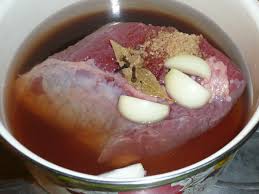 Mix all the ingredients into a pot and bring it to a boil. In the meantime, place your vegetables (washed) into the jars. Pour the boiling mixture over the vegetables and seal the jars. Next, use the canning method explained in the beginning to increase the preservation time. Now, all you have to do is to store the jars into a cool and dark room, where the temperature never exceeds 24 degrees Celsius. For larger quantities of vegetables, increase the brine ingredients accordingly.
Mix all the ingredients into a pot and bring it to a boil. In the meantime, place your vegetables (washed) into the jars. Pour the boiling mixture over the vegetables and seal the jars. Next, use the canning method explained in the beginning to increase the preservation time. Now, all you have to do is to store the jars into a cool and dark room, where the temperature never exceeds 24 degrees Celsius. For larger quantities of vegetables, increase the brine ingredients accordingly.
For pickling one pound of meat, you will need:
• 1 stainless steel bowl
• 1 stainless steel plate
• 4 cups of water, or just enough to cover the meat by 1 inch
• 1 cup of sea salt
• 1 raw egg
• 4 garlic cloves, peeled
• 2 bay leaves
• 1 tablespoon of ground pepper
• 2-3 sprigs of fresh thyme
Pour the water into the bowl and dissolve the salt into it. To make sure that you have added enough salt, place the egg inside, and if it floats you have the right composition. Add the rest of the ingredients and mix well. Place the meat inside the brine and put the plate on top of it, to make sure the meat is completely submerged, as it should stay for the whole pickling process. Next, place the bowl into a cold environment, such as the freezer or the cellar. Keep the meat in the brine for a period of 10-14 days, turning it once every three days. Afterwards, the meat will be ready to cook on the grill or in the oven and the product will be edible for many months to follow.
These are just a few of the simple techniques that will help you preserve food for a very long time at a relatively small cost. You can use these methods ensure your family with a reliable resource of nutritious food.
This Crazy Off Grid Device Literally Makes Drinkable Water From Fresh Air:
According to NASA, the U.S. is expecting a 100-YEAR LONG MEGADROUGHT.
It's already begun. Ask the farmers in California. They know.
Every survivalist knows that water is of critical importance. You NEED an independent water source that you can count on!
As an interesting "survival rehearsal" - imagine that you turned the tap on right now and nothing came out. How long would you last?
But what if there was another water source literally hidden in plain sight. That's right, I'm talking about the atmosphere!
The amazing thing about getting water from the natural moisture in the air... is that it is ALWAYS available.
This gives you real water security!
Learn more about how to tap into "Nature's secret water reservoir" and stay hydrated when TSHTF!
Watch the video:
😳 What Tinnitus Does To Your Brain Cells (And How To Stop It)
After 47 years of studies and countless brain scans done on more than 2,400 tinnitus patients, scientists at the MIT Institute found that in a shocking 96% of cases, tinnitus was actually shrinking their brain cells.
As it turns out, tinnitus and brain health are strongly linked.
Even more interesting: The reason why top army officials are not deaf after decades of hearing machine guns, bombs going off and helicopter noises…
Is because they are using something called "the wire method", a simple protocol inspired by a classified surgery on deaf people from the 1950s...

I Can't Help Showing This Off:
If you haven't heard of Claude Davis yet do yourself a huge favor and watch this video.
One of the smartest guys I ever had the pleasure of meeting, Claude set-up a unique prepping system that changed his life forever.
I already tried it myself and let me tell... you I was completely blown away... His surprising tactics could make your life easier and give you the peace of mind you deserve.
Don't just take my word for it... watch his short video and decide for yourself.

Most People Don't Have The Guts To Try This:
An amazing discovery in an abandoned house in Austin, Texas: A lost book of amazing survival knowledge, believed to have been long vanished to history, has been found in a dusty drawer in the house which belonged to a guy named Claude Davis.
Remember... back in those days, there was no electricity... no refrigerators... no law enforcement... and certainly no grocery store or supermarkets... Some of these exceptional skills are hundreds of years of old and they were learned the hard way by the early pioneers.
>> Click here to find out about them now
We've lost to history so much survival knowledge that we've become clueless compared to what our great grandfathers did or built on a daily basis to sustain their families.
Neighbors said that for the last couple of years Claude has tried to unearth and learn the forgotten ways of our great-grandparents and claimed to have found a secret of gargantuan proportions. A secret that he is about to reveal together with 3 old teachings that will change everything you think you know about preparedness:
>>> Click Here To Watch His Short Video <<<

More Off-Grid And Survival Resources:

What REALLY Happens When You Bury a Shipping Container? (Hint: It's A Bit Crazy...)
Shipping containers are all the rage - but if you are thinking about buying one, you MUST watch this video first:
There's a general belief that if you bury a shipping container you can create an awesome root cellar / storm shelter / survival bunker.
But is a shipping container strong enough to handle the pressure?
Watch the video to see what happens:
What Really Happens When You Bury a Shipping Container? (Click To Watch Video)

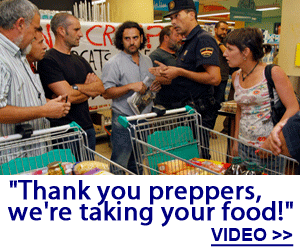

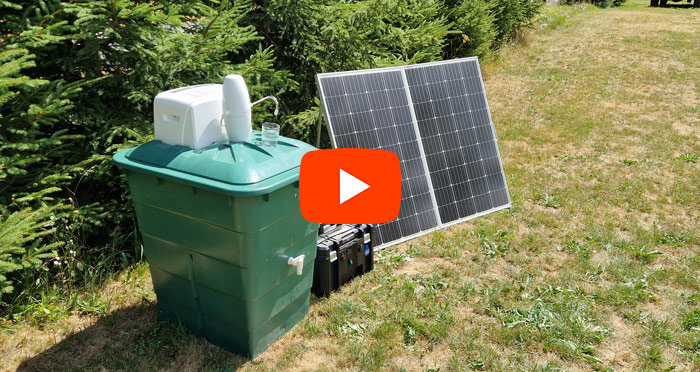




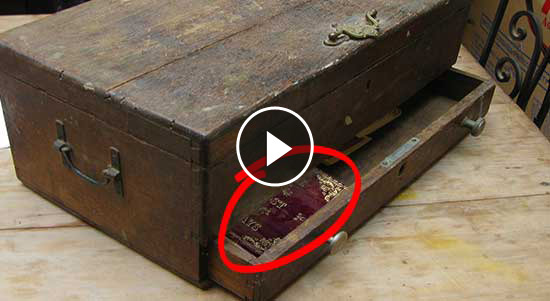


Your article on canning is wrong. Water bath canning is for pickling. You must pay close attention to the proper requirements for processing low acid foods (vegatables, meats and seafood). They must be processed for a prescribed time and tempature based on your specific altitude. We don’t want to make people ill with botulism. I advise people to go to http://nchfp.uga.edu/ website for a “Complete Guide to Canning”. Let’s be safe in the way that food is prepared for long term storage
Yes! This is extremely important to understand. Pressure canning is the only safe way to can many foods. Food poisoning will kill you faster than a zombi apocalypse!
You are missing another technique that was used for hundreds of years, that is gassing. get a container that is large and air tight, fill with dry beans, bags of flour, dehydrated fruits or vegetables, whatever that is dried. Place a small metal dish on the top of the food, add a tablespoon of sulfur, light it make sure it is burning well and then close, and seal the container. The Hydrogen Sulfide gas will kill any bug larvae, mold, bacteria, thus preserving the food till you open the container. Check Foxfire books for other ideas.